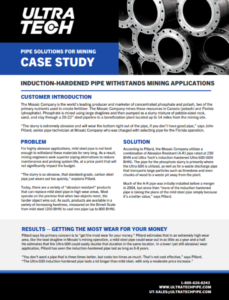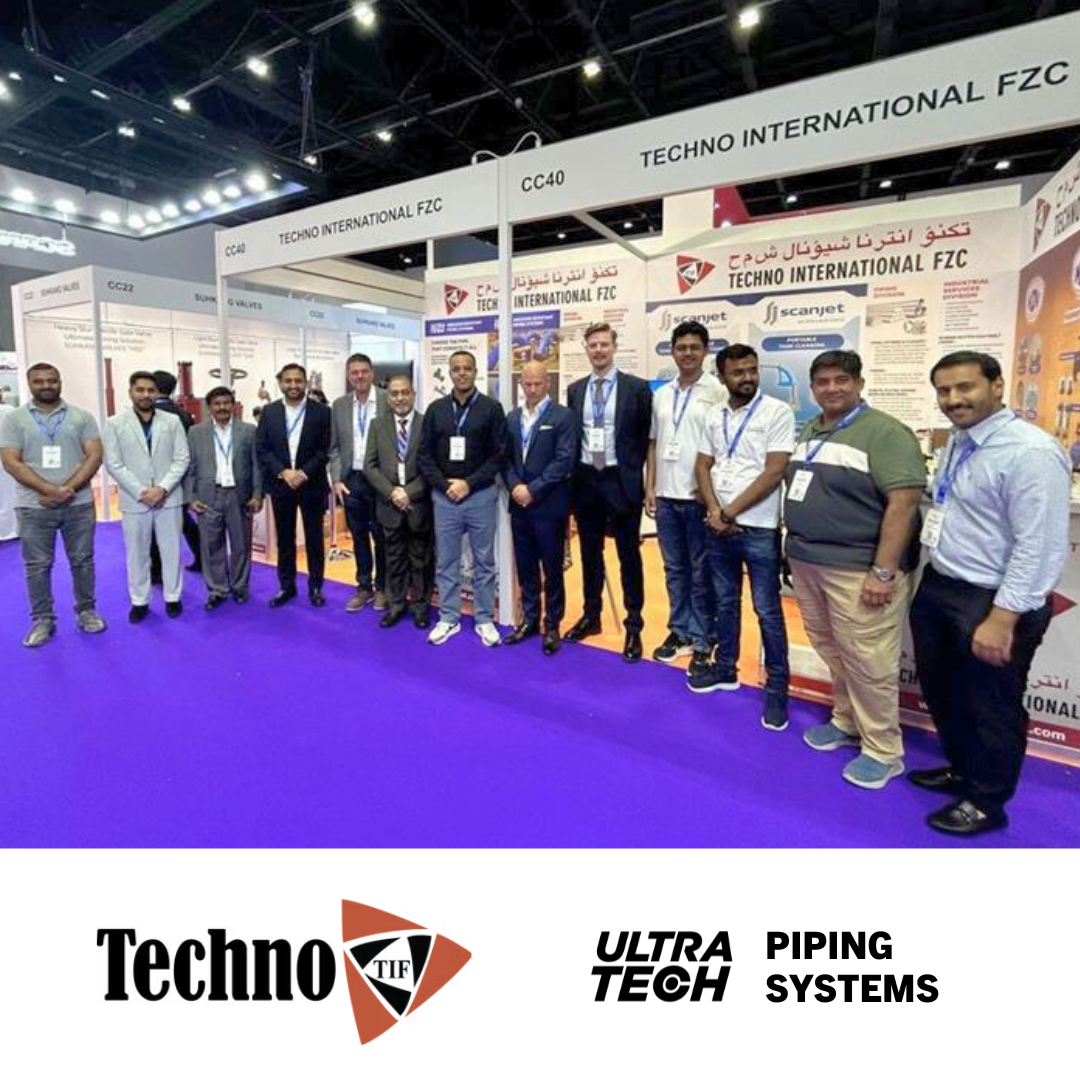When abrasive material is transported through steel pipe in mining applications, typically as pumped slurry, the effect on the inner surface is devastating. The abrasive material quickly erodes the pipe from the inside out, which in more extreme cases can result in pipe leaks and even failure, or significant maintenance costs and downtime for pipe replacement. Steel piping systems are widely used in mining to convey the product, ore, and tailing slurries to the processing plant, as well as to recycle the debris medium back to the mining area. Other mining applications include steel pipe for drop shafts for conveying product from high elevations, and for backfilling the mine excavation areas utilizing sand fill, classified tailings, or paste fill.
For these highly abrasive applications, mild steel pipe is simply not tough enough to stand up to the abuse for more than a year or two. As a result, mining engineers are seeking superior piping alternatives to reduce maintenance and prolong system life, at a price point that will not significantly impact the budget.
“The slurry is so abrasive, that standard-grade carbon steel pipe just wears out too quickly,” explains Senior Pipe Technician John Pillard, the person charged with selecting the pipe for the Mosaic Company’s phosphate mining operation in Florida.
The Mosaic Company is the world’s leading producer and marketer of concentrated phosphate and potash, two of the primary nutrients used to create fertilizer. The Mosaic Company mines these resources in Canada (potash) and Florida (phosphate).
Phosphate is mined using large draglines and then pumped as a slurry mixture of pebble-sized rock, sand, and clay through a 20-22” steel pipeline to a beneficiation plant located anywhere from 1 ½ to 14 miles from the mining site.
“The slurry is extremely abrasive and will wear the bottom right out of the pipe, if you don’t have good pipe,” says Pillard.
Abrasion resistant pipe options
Today, there are a variety of “abrasion resistant” products and accessories that have come onto the market to replace mild steel pipe in high wear areas. Most operate on the premise that when two objects meet, the harder object wins out. As such, products are available in a variety of increasing hardness, measured on the Brinell Scale from mild steel (200 BHN) to cast iron pipe (up to 800 BHN).
Unfortunately, any product that is very hard throughout the wall thickness is also extremely brittle. This brittleness is unacceptable as piping systems are constantly flexing and moving as a result of pressure surges and spikes, and due to mechanical and physical contact at the facility. However, one type of pipe delivers the best of both worlds: an induction hardened pipe with an abrasion resistant inner surface that tapers to a strong, yet ductile outer surface.
Manufactured by Port Washington, Wisconsin-based Ultra Tech, this unique pipe is produced under the Ultra 600 brand. Ultra Tech begins with a steel pipe manufactured to a proprietary chemistry, followed by induction heating, and finally water-quenching the inner surface to create a single-wall pipe.
At 600 BHN, the inner surface of this induction hardened pipe can withstand most common abrasives, and tapers to a 250 BHN outer surface that is ductile enough to accommodate normal handling during shipment, installation and maintenance. With this proprietary process, pipe can be created in various diameters up to 40”, in varying lengths and wall thickness. Because the outer surface behaves like mild steel, the product can be cut and welded with proper procedure in the field, configured into a variety of fittings, and can accept the standard end options of flanges, weld rings and couplings.
According to Pillard, the Mosaic Company utilizes a combination of Abrasion Resistant (A-R) pipe rated at 230 BHN and the induction hardened Ultra 600. The pipe for the phosphate slurry is primarily where the Ultra 600 is utilized, as well as for a waste discharge pipe that transports large particles such as limestone and even chunks of wood to a waste pit away from the plant. Much of the A-R pipe was initially installed prior to a merger in 2004, but since then “more of the induction hardened pipe is taking the place of the mild steel pipe simply because it’s a better value,” says Pillard.
Paste Backfilling of Mines
Another unique, high abrasion application for the Ultra 600 induction hardened pipe is for paste backfilling of mines, an alternative to the current sand fill methods. There are unique problems associated with paste fill applications, which range from extremely rapid system wear to paste separation and system blockage. Attempting to unblock several thousand feet of vertical pipeline is both dangerous and expensive. The cost to replace a prematurely worn drop shaft can exceed a million dollars. One successful solution is to maintain the vertical line full of paste. This prevents the rapid wear and tremendous impact loads caused by “air mailing” the paste fill. It also eliminates the partially full line and the accompanying air pockets which cause pipeline hammer and rapid surges in material velocity. Maintaining a full line of paste also prevents the separation and segregation which occurs as result of the free falling paste.
While basic in concept, paste fill applications require components and accessories designed specifically for this type of service. The pressures encountered can be extremely high (in excess of 4,000 psi) while the material conveyed is extremely abrasive.
The Ultra 600 induction hardened steel pipe is well suited for the paste fill process. Ultra Tech also produces the induction hardened pipe in long radius bends to further reduce wear at the bends and elbows in high wear applications such as this one.
Getting the most wear for your money
As the senior pipe technician, Pillard says his primary concern is to “get the most wear for your money.” Pillard estimates that in an extremely high wear area, like the lead dragline in Mosaic’s mining operation, a mild steel pipe could wear out in as little as a year and a half. He estimates that the Ultra 600 could easily double that duration in the same location. In a lower (yet still abrasive) wear application, Pillard has seen the induction hardened pipe last as long as 6-8 years. “You don’t want a pipe that is three times better, but costs ten times as much. That’s not cost
effective,” says Pillard. “The Ultra 600 induction hardened pipe lasts a lot longer than mild steel, with only a moderate price increase.”




